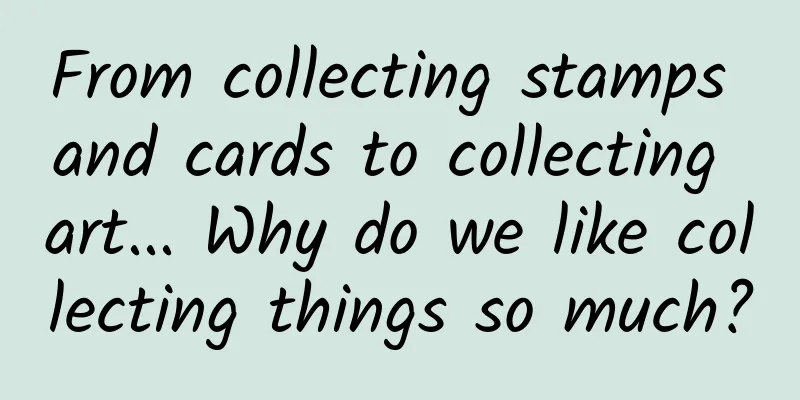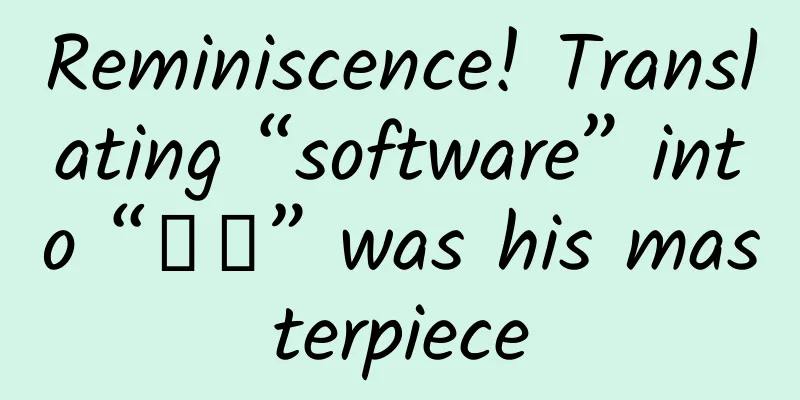From collecting stamps and cards to collecting art... Why do we like collecting things so much?

|
In 2016, the British BBC TV station broadcast a very interesting documentary "Unstoppable", which tells the story of people's unstoppable habits. The first episode "Pathological Collecting Obsession" describes various collecting obsessions: Ron from Lincolnshire, England, is a dwarf collector. He has been collecting dwarfs for more than 50 years since he was in his 20s. He currently owns 1,725 dwarfs, the largest number of dwarfs in the world. Ron's dwarfs are densely packed in every corner from the garden, living room to bedroom and toilet, creating a spectacular scene. Ron even opened a dwarf museum to receive visitors from all over the world and share his stories with dwarfs. In Florida, USA, a Barbie doll collector named Laurie has collected nearly 3,000 Barbie dolls. She spent 25 years purchasing various limited edition Barbie dolls from all over the world. She even set aside a study and put several display windows in it to display these precious collections. These collectors can't help but make us marvel. Although ordinary people like us rarely have such an exaggerated collecting habit, in our society, collecting is undoubtedly a very common behavior. When we were young, we might collect cards that came with snacks, sets of Ultraman cards, glass beads or other toys for playing, etc. When we grow up, we may collect stamps, boxes, shoes, cup lids, figurines or various works of art, etc. In today's society, virtual collection has also developed, especially collecting cards, props, and even achievements in video games... Collecting seems to be an instinctive behavior of ours, and many people enjoy it. Today we will talk about the hobby of collecting from a psychological perspective. 01 What is the purpose of collecting? Collecting, or collecting, is a tendency to acquire and keep things . This tendency is almost ubiquitous. For example, birds and hamsters will hoard some food. Researcher Hammer even found that hamsters prefer to hoard glass beads. [5] Whether in modern or primitive society, we humans also have the habit of collecting, such as hoarding food for emergencies or to survive the cold winter. However, for human beings, in the long process of social development, collecting has obviously surpassed the original "physiological needs" and is more of a psychological need . The reasons behind it may involve various factors such as economic, social and psychological factors. Researcher Sarri studied various collecting behaviors and classified collectors into four types[6]: The first type is the obsessive collector . They have an obsessive feeling towards the objects they collect and are even willing to pay a great price to collect the desired items. For example, in the documentary "Unstoppable", a woman who is obsessed with collecting lifelike dolls even treats them as her own children. This is obviously not a rational collecting habit. The second type is the curious collector , who sees his collection as an investment, such as some people who collect antiques and hold auctions. The third type is the hobby collector , who purely regards collecting as a hobby. For example, Ron, who likes to collect dwarfs, is such a person. The fourth type is the expressive collector , whose collection is an expression of their self-image or emotions. For example, Lowry, a Barbie doll collector, believes that these dolls are a compensation for her unstable childhood and can give her a comfortable sense of security. Or some people collect valuable works of art to show their status. Therefore, behind the act of collecting is often the collector's inner motivation, which may be due to the economic value of the item, the social value of the item, or self-emotion, etc. 02 Different collections The same happiness From the four types of collectors identified by Sally, it is not difficult to find that the core of collecting behavior is related to the self and is usually related to positive self-experience[3]. Self-experience is a relatively broad concept, referring to the inner experience that accompanies self-awareness and is the emotional expression of self-consciousness. We can use the following examples to illustrate the connection between collecting behavior and self-experience[4]. 1. Collecting is a reflection of the pursuit of self-worth For example, people collect certain items as a hobby and do not require external rewards. As researchers Long and Schiffman said, "Collectibles are souvenirs of the act of collecting." Collectors will regard collectibles as a manifestation of self-worth. 2. Collectibles are a vehicle for self-expression For example, people often collect items related to the past, especially those related to their childhood, such as comic books, candy boxes, toys, etc. People establish links with the past by giving these collections unique meanings, expressing nostalgia for past memories or compensation for their childhood. 3. Collectibles can enhance self-identity and self-esteem For example, people collect artworks to prove and express their aesthetic taste, or collect celebrity belongings to enhance their self-esteem through their ownership of the collection. Brain science research has also found that collecting behavior is often accompanied by significant activation of the limbic cortex and mesolimbic cortex. These two brain regions are mainly responsible for expressing emotions and regulating rewards [2]. This is consistent with the positive self-experience we discussed earlier. Collecting behavior and collectibles can trigger people's positive emotions, causing the brain to send reward signals, making people feel happy during the collecting process , full of motivation for collecting behavior, and constantly wanting to continue collecting more items. 03 Although collecting is good, it should be done in moderation Collecting is a very common behavior. It is a tendency that humans have retained during the long process of evolution and has further developed into a behavior that satisfies people's emotional experiences. However, some people's collecting behavior goes beyond the normal range and causes varying degrees of trouble to their lives. For example, an obsessive collector may not be able to control his or her emotions towards certain items , which may lead to excessive emotions being invested in the collection. On the one hand, he or she may neglect important people around him or her, and on the other hand, he or she may go bankrupt in order to collect items, causing serious financial problems. Some people collect indiscriminately, to the point of hoarding a large amount of useless items, which leads to what people call " hamster syndrome ". This is called hoarding disorder in psychology, which refers to a mental illness in which people have difficulty discarding or separating from items due to the perceived need to store them, resulting in a series of psychological and behavioral disorders [1]. In simple terms, people with hoarding disorder have three core symptoms: 1. Regardless of whether the item is valuable or not, it is difficult to discard it and it will be painful to discard it; 2. Have a strong desire for storage, and will pile up a lot of items in the living area, making it look messy; 3. Hoarding of items has seriously interfered with daily life and caused anxiety or distress. The documentary "Unstoppable 2: The Unstoppable Hoarding" describes some people with hoarding disorder who hoard a large amount of items in their homes and look like they live in a garbage dump. In short, collecting itself is a good hobby that can bring people a lot of happiness and self-worth, but at the same time, you must do it within your means, otherwise it will backfire and bring a lot of trouble to your life. References: [1] Jiang Mengqian. (2021). A study on the psychological mechanism of college students’ hoarding behavior (Master’s degree thesis, Yunnan Normal University). [2] Anderson, SW, Damasio, H., & Damasio, AR (2005). A neural basis for collecting behavior in humans. Brain, 128(1), 201-212. [3] Zonneveld, L., & Biggemann, S. (2014). Emotional connections to objects as shown through collecting behavior: The role of ardour. Australasian Marketing Journal (AMJ), 22(4), 325-334. [4] McIntosh, WD, & Schmeichel, B. (2004). Collectors and collecting: A social psychological perspective. Leisure Sciences, 26(1), 85-97. [5] Hammer, LR (1972). Further hoarding preferences in hamsters. Psychonomic Science, 26(3), 139-140. [6] Saari, L. (1997). Those crazy collectors. The Orange County Register, 15, D1. Author: Chen Yufeng, Master of Psychology, South China Normal University Review | Tang Yicheng, Deputy Director of Beijing Zhongke Popular Mental Health Promotion Center |
>>: 183 days! Tracing the flight footprints of the Shenzhou 14 crew
Recommend
Dudu-2022 Postgraduate Entrance Examination for Master of Translation Systematic Knowledge Lecture
Course Catalog ├──2022 Master of Oriental Transla...
How much does it cost to customize a health care product mini program in Yongzhou?
According to industry insiders, mini programs wil...
4K and VR are the future trends. Does the claim that PC gaming CPUs have excess performance still hold true?
"As long as you have a good graphics card, i...
2020 College Entrance Examination Volunteer Application Process College Entrance Examination Volunteer Application Skills and Methods
Recently, the 2020 college entrance examination r...
Benefits for Android users: Ten major improvements in Google Android N
The online version of Forbes recently wrote an ar...
Why are today’s young people starting to become “at a loss for words”: they forget the words they speak and the characters they write?
If you were asked to give a compliment to your fr...
Is the blind box marketing routine on hold?
The blind box circle doesn’t seem to be peaceful ...
6 golden rules of new media marketing!
New Media New media is a relative concept. It is ...
Real-name registration is required for riding in Shenyang! When will it be implemented? How to do it specifically?
Recently, it was learned from the Shenyang Munici...
The core tactics of selling courses with private traffic in 2019
If we talk about the hottest term in 2019, it mus...
Middle-aged and elderly people really shouldn’t be vegetarians for a long time! This is equivalent to “chronic suicide”
In a recent variety show "Flowers Along the ...
3000 words revealing the secrets of advertising on Xiaohongshu!
When it comes to the most popular APP in 2019, Xi...
WeChat's new function makes netizens complain: If this continues, we can only use DingTalk
WeChat is probably the most used chat app in Chin...
How to write a good copy that will not be disliked by users?
Just like posting advertising copy in the circle ...
In addition to aspartame, plants can also be "sweet"!
Excerpted from: Inside and Outside the Classroom ...









